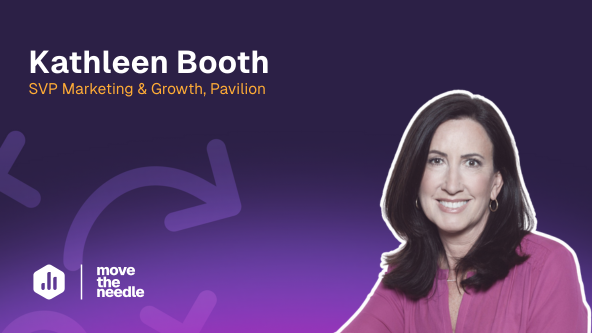Table of contents
Q4 is upon us, which means it’s almost time to craft next year’s plan.
For most companies, that still means starting with a top-line number:
“How much revenue do we want to hit by the end of next year?”
But this raises two big questions:
- How do you know what you’re likely to achieve from a sales perspective?
- How can you craft a plan that’s actually realistic — and achievable — with your current team and resources?
In this issue, Dougie Loan (CRO at SourceWhale) shares his simple, but powerful, formula for crafting an accurate sales plan to help you hit your annual revenue goal.
Watch the interview with Dougie Loan
Or listen to it on Spotify or Apple.
The Problem with Headcount-Driven Growth
Like many SaaS companies, SourceWhale’s sales plans used to start with an annual growth target, ARR goal, and a hiring plan.
In other words: “We’ll hit the goal if we hire enough people.”
“Don’t believe that headcount equals growth. It’s the biggest mistake that I see all the time, and it’s common. Founders [will] have one or two salespeople that are doing well and then they’ll just say, ‘Well, if we just keep doing that and we have 100 salespeople, then life’s great, right?’”
But as Dougie quickly discovered, simply adding more people doesn’t mean performance goes up and to the right.
He needed a better way to identify which metrics (or levers) actually drove growth.
The 3-Lever Formula for More Accurate Sales Planning
Instead of building sales forecasts around headcount, Dougie’s team built their plan around three core metrics:
- Qualified Held Meetings (QHM) – The number of booked meetings that actually happen and meet the qualification criteria.
- Close Rate – The percentage of those opportunities that become customers.
- Average Deal Value (ADV) – The average revenue generated per deal.
These three levers became the foundation for a simpler, more accurate forecast.
Here’s a basic example:
- 100 Qualified Held Meetings
- 30% Close Rate → 30 Closed/Won Deals
- $10,000 Average Deal Value
→ $300,000 in revenue
From there, the SourceWhale team could adjust one lever at a time to project how their results might change.
💡 Want to model your own formula? Check out Databox’s Sales Forecast Dashboards.
Turning the Formula into a Forecast
In the past, Dougie’s team would set an ambitious revenue goal and then work backward. Now, they start with the data.
They analyze:
- The average number of Qualified Held Meetings per month (by region and source)
- The average Close Rate and Deal Value
- Their year-over-year change in each metric
From there, they model different growth scenarios — increasing one, two, or all three levers — to forecast revenue potential.
“It’s super easy to look at the data on a spreadsheet and say, yeah, sure, just get qualified held meetings up by 40%. Let’s just do that,” Dougie said.
“Where’s the plan to actually come and do that?”
Today, you can run this exact model directly in Databox Forecasts.
No spreadsheets. No guesswork. Just pick your metrics, model what-if scenarios, and visualize how small improvements translate into big growth.
💡 Model your next sales plan with Forecast Modeling in Databox and see which levers will move your number before you lock in next year’s target.
From Forecasting to Execution: Aligning Teams with OKRs
Even the best forecast is useless without execution.
That’s where Databox OKR Software comes in.
Once your model is set, you can turn those three levers into measurable Objectives and Key Results (OKRs):
- Objective: Drive predictable sales growth in 2025
- KR1: Increase Qualified Held Meetings by 15%
- KR2: Improve Close Rate from 28% → 32%
- KR3: Raise Average Deal Value by 10%
OKRs connect your strategy to day-to-day performance.
In Databox, you can link each KR to live data from your CRM, automatically track progress, and visualize how your team is pacing toward the goal.
💡 This is how you turn planning into predictable scale — the same system we teach in our Predictable Scale course.
How SourceWhale Operationalizes It
At SourceWhale, this model became more than a planning tool — it became their operating system.
- They review these three levers weekly.
- Reps receive both a revenue leaderboard and a close-rate leaderboard.
- Marketing and Sales share credit (and comp) for Qualified Held Meetings booked through joint campaigns.
- Leaders adjust coaching, resource allocation, and R&D investments based on which lever needs attention.
Dougie’s team uses a 20-metric dashboard each Monday to check assumptions, monitor progress, and adjust as needed — exactly the kind of view you can create in Databox using Scorecards and Team Performance Dashboards.
Build Your Own 3-Lever Model in Databox
If you want to plan and execute like Dougie’s team, here’s how to start:
- Build your 3-lever model in Databox using Qualified Held Meetings, Close Rate, and Average Deal Value metrics.
- Forecast scenarios with Databox’s Forecast Modeling to see what’s realistic.
- Set OKRs for each lever and monitor weekly performance.
- Align your GTM team around shared visibility using Databoards and Scorecards.
When you stop guessing and start modeling, you can scale more predictably. No headcount spreadsheets required.
Use Databox to build and track custom metrics for your sales formula
With Databox, you can build custom metrics like Qualified Held Meetings, Average Deal Volume, and Close Rate to create your sales formula. See how.
🎧 Want more insights like this?
Follow the Move the Needle podcast for conversations with top GTM leaders who are redefining how teams plan, forecast, and scale.
Or explore more dashboards that make these levers visible in real time:













